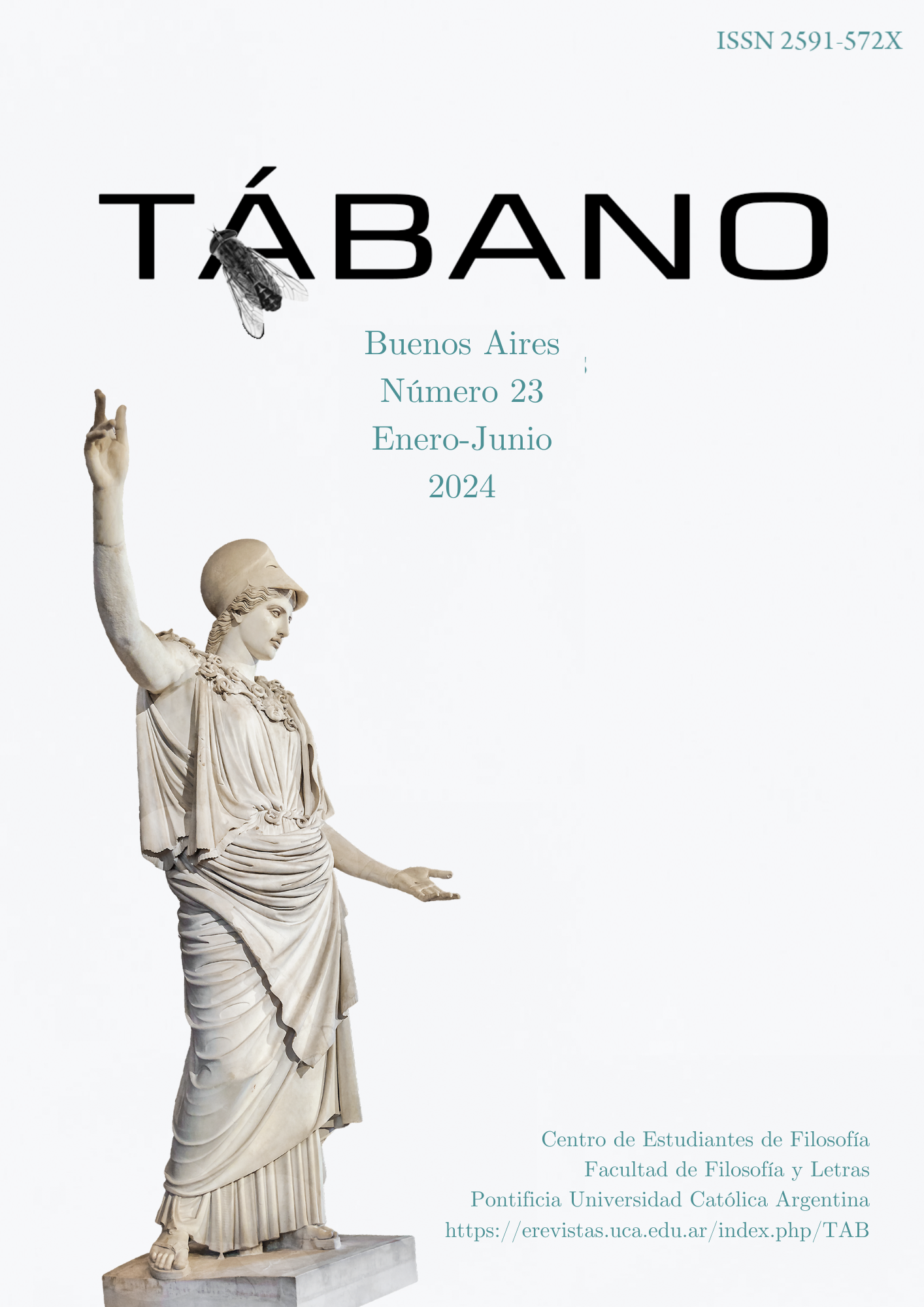The vitality of the sea in Albert Camus: An analysis of The Plague, The State of Siege and The First Man
DOI:
https://doi.org/10.46553/tab.23.2024.p54-72Keywords:
Albert Camus, Sea, Value of Life, Sense of ExistenceAbstract
This article elucidates the figure and place of the sea in part of Camus' literary work, in particular, The Plague, The State of Siege and The First Man. To this end, two possible interpretations are taken as a starting point. First, the sea is approached as a reflection of the vital state of human existence and, more precisely, of the citizens of Oran and Cadiz, and of the children of Argel. Secondly, it attempts to understand human existence as a reflection of the freedom and vitality of the sea, an indifferent divinity that accompanies and protects man. From the analysis of these interpretations, the paper attempts to demonstrate how the sea is, for Camus, a means to symbolize and find the value of life.
Downloads
References
Barthes, R. (1970). L’Etranger, roman solaire. En Les critiques de notre temps et Camus. Paris: Garnier Frères.
Buceta, M. (2022). Entre filosofía y literatura: Albert Camus y la transición de la existencia absurda hacia la comunidad solidaria. Revista Humanidades, 12(2). DOI: https://doi.org/10.15517/h.v12i2.50759
Camus, A. (1957). El estado de sitio. En Teatro (pp. 123-202). Buenos Aires: Losada.
Camus, A. (1972). Bodas. Buenos Aires: Sur.
Camus, A. (1978). El hombre rebelde. Buenos Aires: Losada.
Camus, A. (1994). El primer hombre. Barcelona: Tusquets Editores.
Camus, A. (1996). El Verano. Bilbao: Alianza.
Camus, A. (2016). El extranjero. Buenos Aires: Booket.
Camus, A. (2021a). El mito de Sísifo. Buenos Aires: Losada.
Camus, A. (2021b). La peste. Buenos Aires: Debolsillo. Armellin
Seschi, G. (1999). La solidaridad en La peste de Albert Camus. Filología y Lingüística, XXV(2), pp. 83-89.
García Peinado, M. A. (1985). La “source” argelina del sol en Albert Camus. Alfinge, 3, pp. 183-196
Hernández, S. M. (2009) Albert Camus. Los caminos de la existencia. Casa del tiempo, 19(2), pp. 89-96.
John, S. (1955). Image and symbol in the work of Albert Camus. French Studies, IX(1), pp. 42-53. DOI: https://doi.org/10.1093/fs/IX.1.42
Marulanda, V. (2011) Albert Camus. Lecciones de La peste. Revista universidad de Antioquía, 303, pp. 79-81.
Mosto, M. (2014) Albert Camus: el peso de la vida. El orgullo de ser hombres y la fidelidad a los límites. Communio, 21(3), pp. 11-23.
Parker, E. (1969). Meursault and Camus's homme algérien. The South Atlantic Bulletin, XXXIV.
Smith, A. A. (1967). Eden as symbol in Camus L'Etranger. Romance Notes, IX(1), pp. 1-5.
Tacca, O. E. (1958). El espíritu mediterráneo en Albert Camus. Revista Universidad, 37, pp. 83-114.
Downloads
Published
How to Cite
Issue
Section
License
Copyright (c) 2024 Clara Noguer

This work is licensed under a Creative Commons Attribution-NonCommercial-ShareAlike 4.0 International License.


